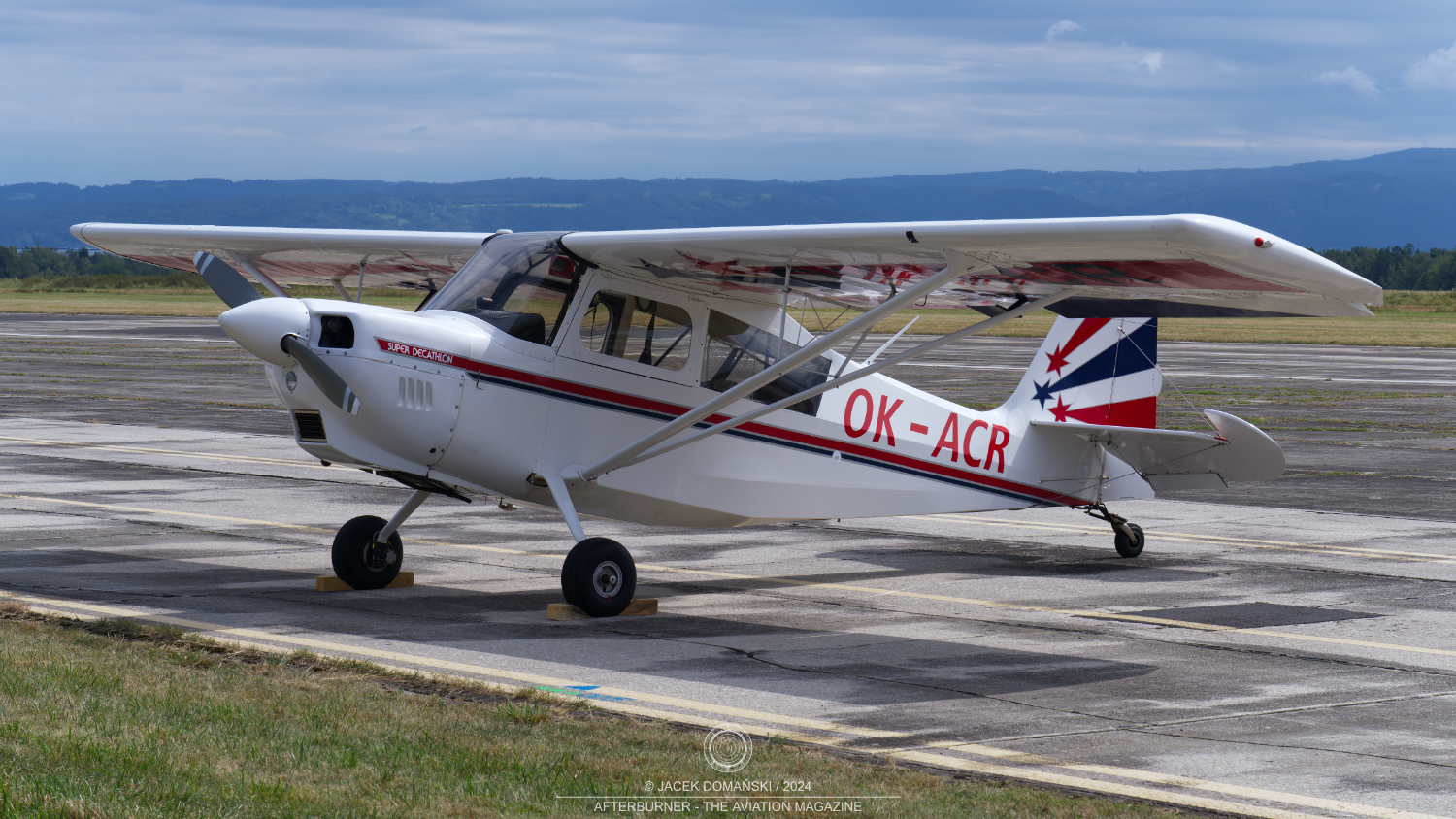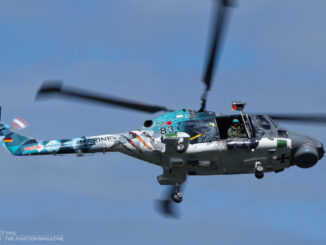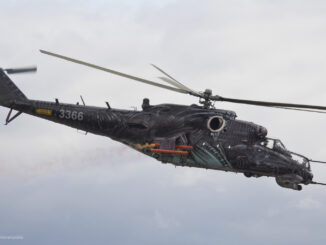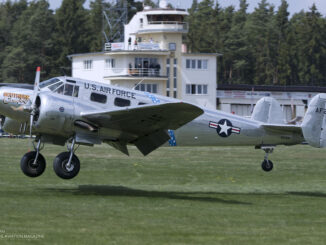 American Champion 8KCAB Super Decathlon (c/n 1057-2007, OK-ACR), exhibited at the Letecký den Cheb 2024 air show, Cheb, August 2024.
American Champion 8KCAB Super Decathlon (c/n 1057-2007, OK-ACR), exhibited at the Letecký den Cheb 2024 air show, Cheb, August 2024.
The 8KCAB Decathlon belongs to the family of popular light utility aeroplanes initially developed by the Aeronca Company (contracted from Aeronautical Corporation of America). In the mid-1940s, the company introduced to the market the first aircraft of the series, designated Model 7AC Champion.
The Model 7 quickly became a commercial success with thousands sold by 1950, when the light aviation market was hit by the first post-war crisis. By that time, Aeronca had developed several upgraded variants of the aeroplane, successively designated the 7BCM, 7DC and 7EC, as well as military versions labelled the L-16, L-16A and L-16B.
In 1954, the rights to produce the Model 7 aircraft were acquired by the newly established Champion Aircraft Corporation of Osceola, Wisconsin. The new company not only manufactured the aircraft from the original Model 7 series but also continued to develop more advanced variants, ultimately designing an aerobatic-capable version known as the Champion Citabria.
The first Citabria entered the market in 1964 and was soon followed by three modernised variants, designated the 7GCAA, 7GCBC and 7KCAB. At that time, the Citabria was the only commercially certified aircraft in the United States capable of performing aerobatic manoeuvres, although with limited inverted-flight capability.
In 1970, the Champion Aircraft Corporation was taken over by Bellanca Aircraft. The new company continued to produce all of the models designed by Champion and added two new aeroplanes to the family – the 8KCAB Decathlon and the 8GCBC Scout.
In fact, the Decathlon had been developed before the company was taken over by Bellanca. However, conflicting information exists as to whether Champion Aircraft managed to produce and sell any examples of the new aircraft before the change of ownership.
The Decathlon was another derivative of the Citabria, retaining the basic design characteristics of the original Aeronca aircraft – a single-engine, high-wing monoplane with strut-supported wings, two seats in tandem configuration, and a conventional fixed landing gear. The fuselage and tail section were made of welded metal tubes, reinforced with wooden longerons and covered with fabric.
What distinguished the 8KCAB series from its predecessors was its extended capability for inverted flight and negative-g manoeuvres. This was achieved, among other features, by equipping the aircraft with a new semi-symmetrical airfoil wing with a shorter 9.8-metre span, a modified fuel injection system incorporating a small header tank mounted below the instrument panel, and an inverted oil system. The first examples were powered by various versions of the Lycoming O-320 engine, generating 115 hp.
In 1975, Bellanca developed an upgraded variant designated the 8KCAB Super Decathlon. This aeroplane was fitted with a more powerful 180 hp Lycoming AEIO-360 piston engine.
However, Bellanca Aircraft Corporation ceased operations in the early 1980s. Over the following years, the rights to produce Champion/Bellanca aircraft changed hands several times. Finally, in 1989, all the designs were purchased by the American Champion Aircraft Corporation (not related to the former Champion Aircraft Corporation). Production of the Citabria, Scout and Decathlon aeroplanes was resumed in 1990 and continues to this day.
In 2012, the American Champion company introduced an upgraded version of the original design. Known as the Xtreme Decathlon, the aircraft was fitted with a 210 hp Lycoming AEIO-390 engine and offered even better aerobatic performance than its predecessor.



